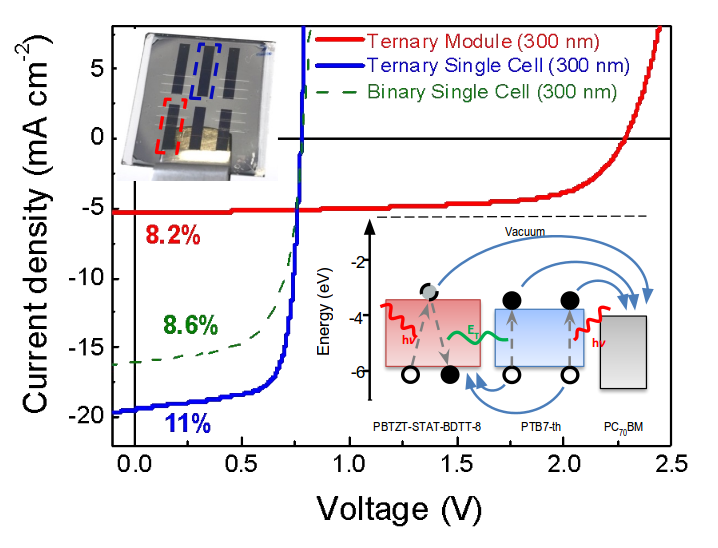Paper on ternary sensitized modules with efficiencies exceeding 8 % in Energy & Environmental Science
Our new paper on ternary sensitized modules with module efficiencies exceeding 8 % just went online in Energy & Environmental Science.
Ternary blend organic solar cells (OSCs) comprising multiple donor or acceptor materials in an active layer have emerged as a fascinating alternative to design customized photovoltaic composites. In the recent years we have engineered ternary composites such as to
- guarantee spectrally broad absorption
- maximize open circuit voltages and
- reduce parasitic loss mechanisms like non-radiative recombination
Nicola showed in a previous manuscript (N. Gasparini et al, Nature Energy 2016) a novel approach to design ternary composites with dramatically reduced recombination losses yielding fill factors (FF) as high as 77 %. Building on that understanding Nicola sensitized a commercial polymer with PTB7-th such that he could form 300 nm thick active layers without running into recombination losses. This allowed us to demonstrate +8 % mini-modules on glass and app 7% mini-modules on flex.

